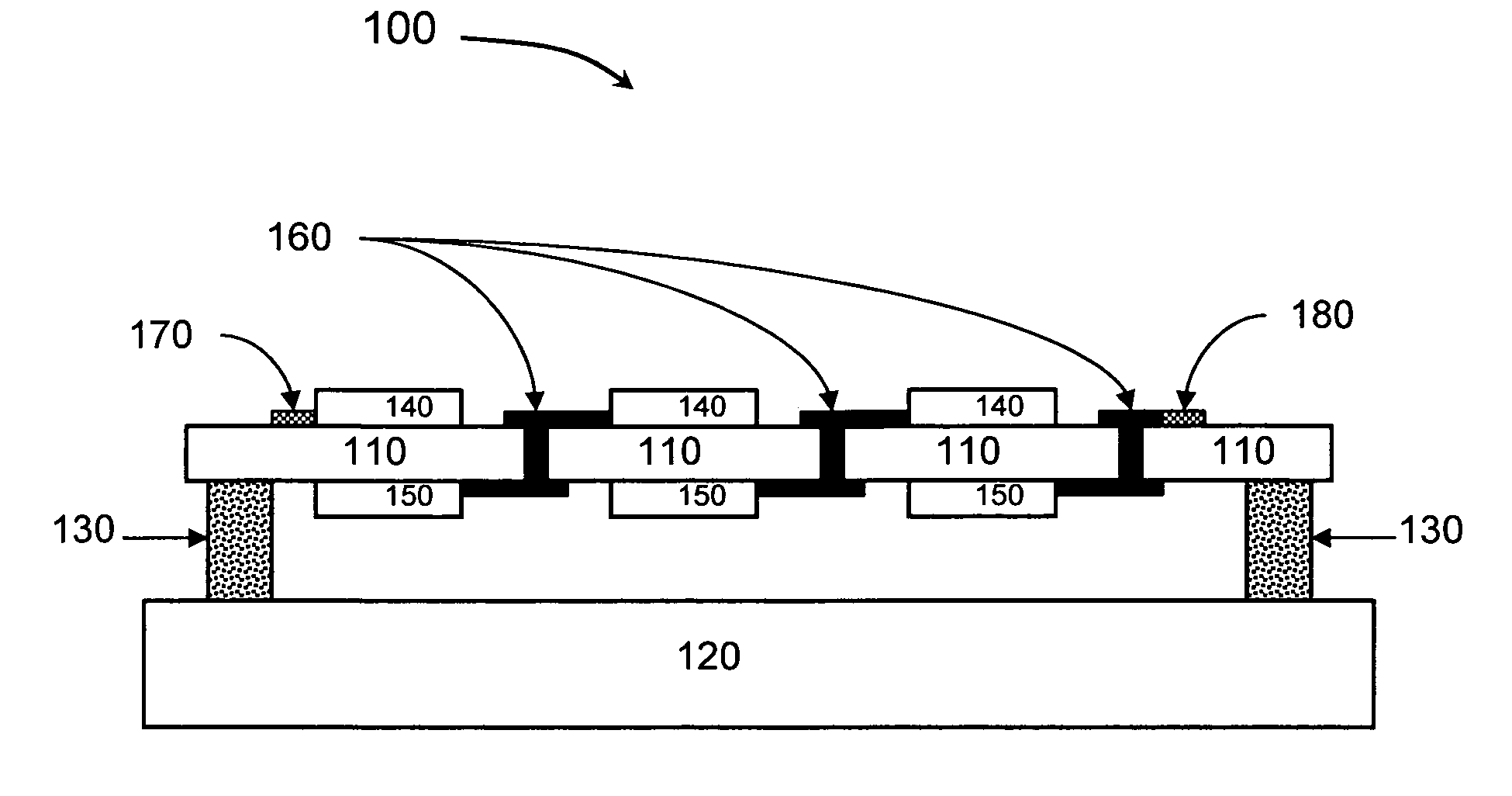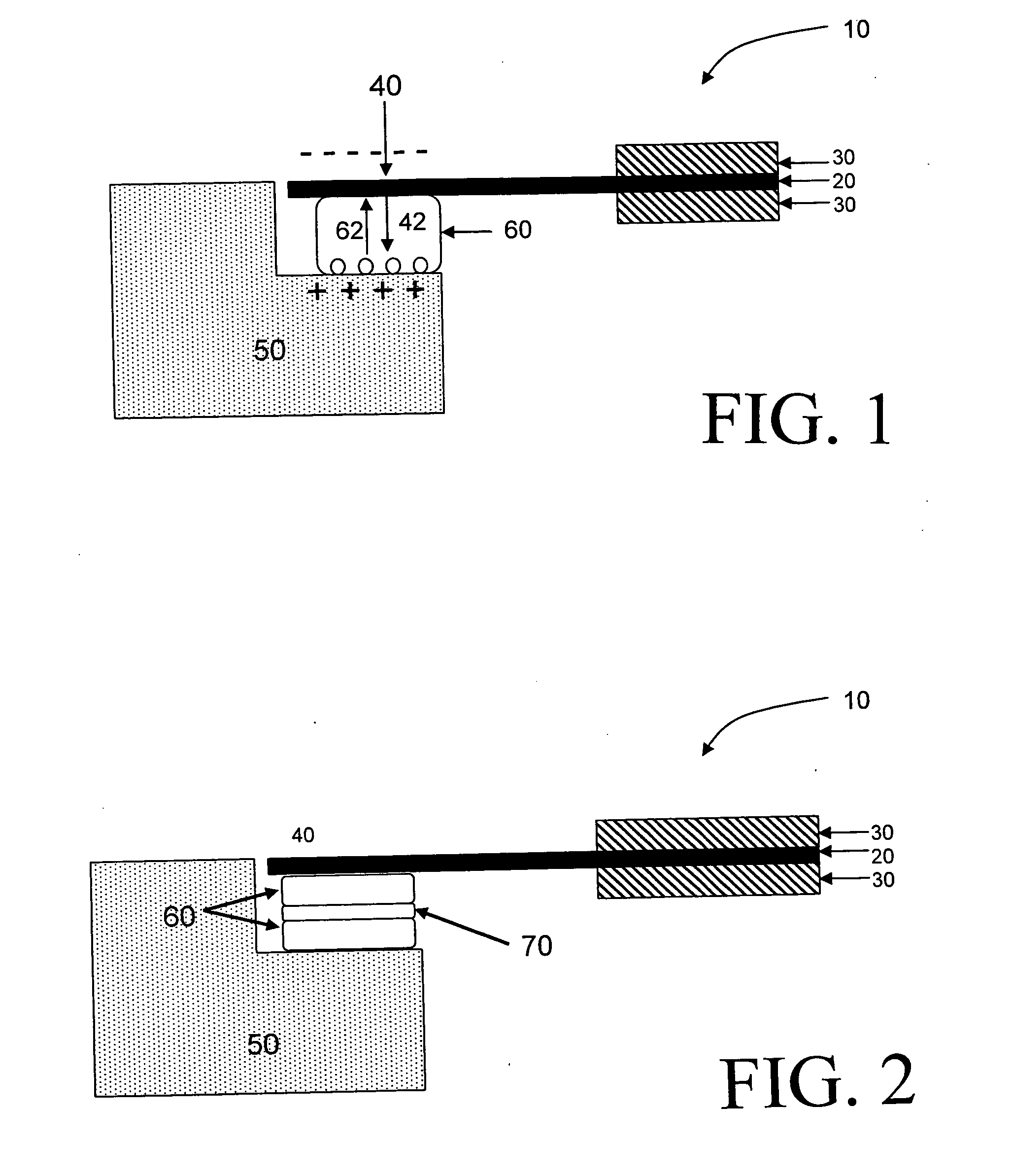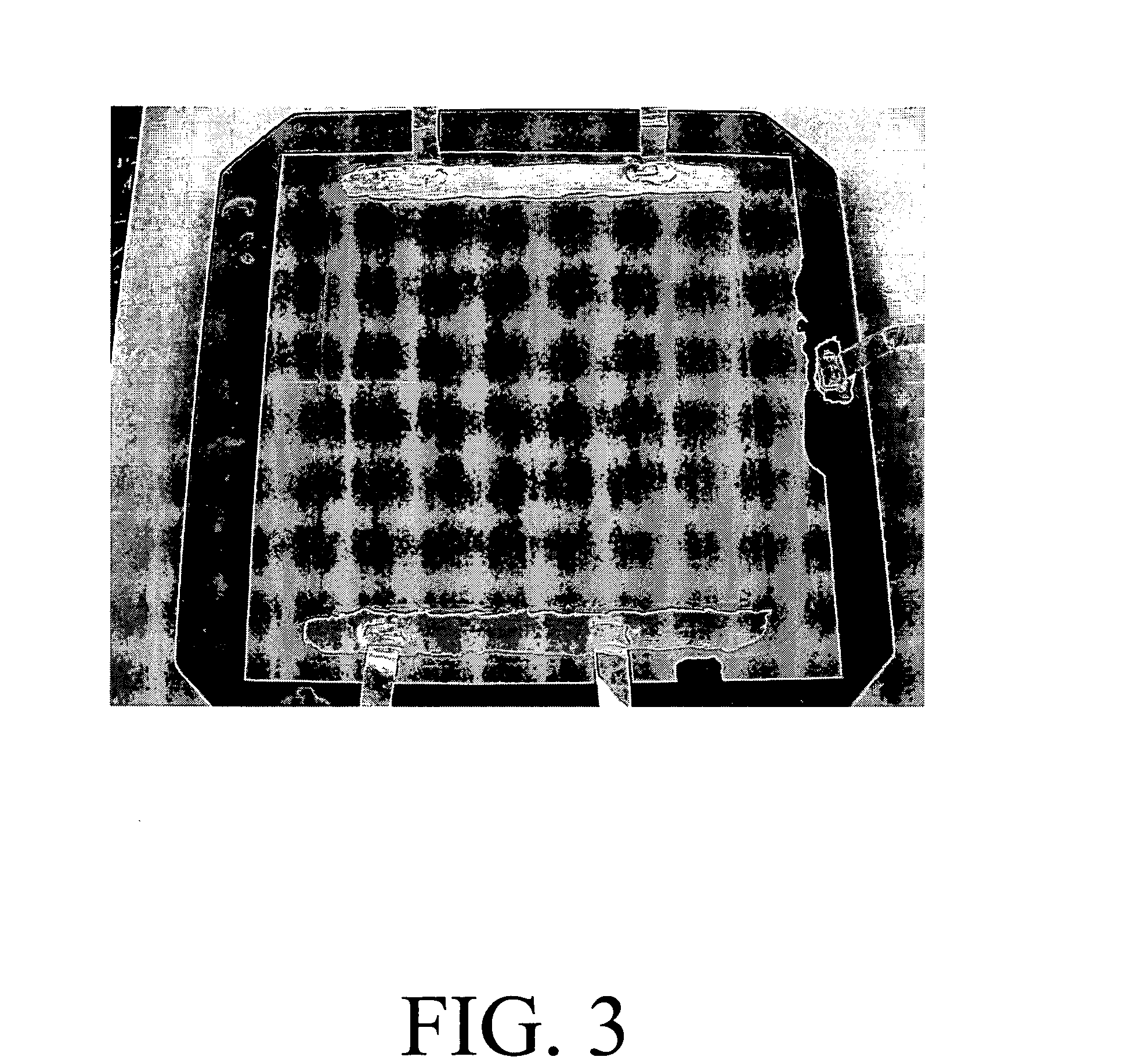Solutions for solid oxide fuel cell seal failures
a solid oxide fuel cell and seal failure technology, applied in the direction of cell components, final product manufacturing, sustainable manufacturing/processing, etc., can solve the problems of large thermal cycling of solid oxide fuel cells, limited durability of such seals, and conventional sealants such as cements, which do not typically provide the durability requisite for long-term operation of sofcs
- Summary
- Abstract
- Description
- Claims
- Application Information
AI Technical Summary
Benefits of technology
Problems solved by technology
Method used
Image
Examples
example 1
Measurement of Voltage Across Seal
[0077]In a first example, devices were fabricated using varying glass frit seals to evaluate a seal failure mechanism. Each device comprised a 446 stainless steel frame, approximately 7 cm×7 cm, onto which a Yttria Stabilized Zirconia (YSZ) electrolyte sheet was attached using a glass frit seal, as illustrated in FIG. 3. The glass frit seal of Device A comprised about 90 wt. % of a strontium-alumina-borosilicate base glass and about 10 wt. % of a filler, wherein the base glass comprised about 4.0 mole % Li2O, about 7.0 mole % CaO, about 18.0 mole % SrO, about 3.0 mole % Al2O3, about 10.0 mole % B2O3, and about 58.0 mole % SiO2, and wherein the filler comprised about 3.0 mole % Y2O3 and about 97.0 mole % ZrO2.
[0078]The glass frit seal of Device B comprised about 90 wt. % of a potassium silicate base glass and about 10 wt. % of a filler, wherein the base glass comprised about 17.4 mole % K2O, about 0.4 mole % Na2O, about 2.5 mole % MgO, about 2.4 mole...
example 2
Resistivity of Glass-Ceramic Seal Compositions
[0082]In a second example, a series of glass-ceramic seals were prepared comprising the compositions detailed in Table 1. The seals were prepared to illustrate the attainable resistivity of a seal comprising an alkali when the alkali is bound in a ceramic phase. The resistivity of the various seal compositions were then measured, as illustrated in FIG. 4, and compared to a conventional glass seal comprising a lithium doped boron-silicate glass. In glass-ceramic seal 1, the potassium was present in a crystalline Kaliophilite phase that was not present in the other seal compositions.
TABLE 1Glass-Ceramic Seal Compositions (weight %)Sample123Al2O315.315.316.0CaO33.633.635.1SiO23635.943.7K2O4.94.25.2GeO210.211.00
[0083]As illustrated in FIG. 4, the resistivity of each of the glass-ceramic seals was significantly higher than that of the conventional glass seal. Both glass-ceramic seals 1 and 3 comprised the same amount of K2O (on a mole % basis...
PUM
| Property | Measurement | Unit |
|---|---|---|
| ionic radius | aaaaa | aaaaa |
| temperatures | aaaaa | aaaaa |
| operating temperatures | aaaaa | aaaaa |
Abstract
Description
Claims
Application Information
 Login to View More
Login to View More - Generate Ideas
- Intellectual Property
- Life Sciences
- Materials
- Tech Scout
- Unparalleled Data Quality
- Higher Quality Content
- 60% Fewer Hallucinations
Browse by: Latest US Patents, China's latest patents, Technical Efficacy Thesaurus, Application Domain, Technology Topic, Popular Technical Reports.
© 2025 PatSnap. All rights reserved.Legal|Privacy policy|Modern Slavery Act Transparency Statement|Sitemap|About US| Contact US: help@patsnap.com



